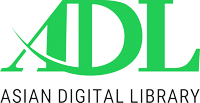Breaking barriers: The impact of gender norms on girls' access to high school education
Keywords:
Girls’ education, Gender Norms, Socio-cultural Barriers, High School Access, PakistanAbstract
This research examines the socio-cultural and gender-based barriers that obstruct girls' access to high school education in Pakistan. In conducting this research, the investigators employed a qualitative method, conducting semi-structured interviews along with focus group discussions in the Multan District. This report provides a window into the lives of the young women who are forced to drop out of school before graduation. Barriers are often reinforced by parents, teachers, and community leaders who conditionally and unconsciously shape a girl’s fate. Despite progress toward gender parity, women remain underrepresented in academic and professional fields. Progress is further stalled when schools aren’t available or when they lack the necessary female infrastructure and role models to motivate a girl to achieve her dreams. The study uncovered instances of nascent resistance among girls and some supportive parents who are fighting for their right to an education and a future that includes the possibility of a profession. It found that achieving gender parity in education requires community-wide strategies that emphasize educational access for girls as well as supportive school environments where role models help pave the way toward female academic achievement
Downloads
References
Abbas, S., Zakar, R., & Fischer, F. (2020). Qualitative study of socio-cultural challenges in the nursing profession in Pakistan. BMC nursing, 19, 1-7.
Alam, A. (2022). Psychological, sociocultural, and biological elucidations for gender gap in STEM education: a call for translation of research into evidence-based interventions.
Ali, T. S., Ali, S. S., Nadeem, S., Memon, Z., Soofi, S., Madhani, F., . . . Bhutta, Z. A. (2022). Perpetuation of gender discrimination in Pakistani society: results from a scoping review and qualitative study conducted in three provinces of Pakistan. BMC women's health, 22(1), 540.
Anwar, S. M., Khan, A. A., & Sardar, Q. A. (2022). Educational disparity among families living in Balochistan (Pakistan) on the basis of gender. Journal of Management Practices, Humanities and Social Sciences, 6(3), 74-80.
Awan, A. G., & Malik, A. (2020). Impact of female education on poverty reduction: An Evidence from Pakistan. Global Journal of Management, Social Sciences and Humanities, 6(2), 220-236.
Azad, A. D., Charles, A. G., Ding, Q., Trickey, A. W., & Wren, S. M. (2020). The gender gap and healthcare: associations between gender roles and factors affecting healthcare access in Central Malawi, June–August 2017. Archives of Public Health, 78, 1-11. https://doi.org/10.1186/s13690-020-00497-w
Andrabi, T., Das, J., & Khwaja, A. I. (2008). A dime a day: The possibilities and limits of private schooling in Pakistan. Comparative Education Review, 52(3), 329–355. https://doi.org/10.1086/588796
Aslam, M. (2009). The relative effectiveness of government and private schools in Pakistan: Assessing the role of gender. Journal of Development Studies, 45(3), 330–347.
Bhatti, A., & Ali, R. (2020). Gender, culture and leadership: Learning from the experiences of women academics in Pakistani universities. Journal of Education & Social Sciences, 8(2), 16-32.
Bullough, A., Guelich, U., Manolova, T. S., & Schjoedt, L. (2022). Women’s entrepreneurship and culture: gender role expectations and identities, societal culture, and the entrepreneurial environment. Small Business Economics, 58(2), 985-996.
Chan, R. C. (2022). A social cognitive perspective on gender disparities in self-efficacy, interest, and aspirations in science, technology, engineering, and mathematics (STEM): The influence of cultural and gender norms. International Journal of STEM Education, 9(1), 1-13.
Herz, B., & Sperling, G. B. (2004). What works in girls’ education: Evidence and policies from the developing world. Council on Foreign Relations.
Hussain, I., Suleman, Q., Din, M. N. U., & Shafique, F. (2017). Gender disparity in higher education in Pakistan: An analysis of enrollment trends. Pakistan Journal of Education, 34(2), 1–16.
ILO. (2018). Women and men in the informal economy: A statistical picture. International Labour Organization.
Inam, H., Janjua, M., Martins, R. S., Zahid, N., Khan, S., Sattar, A. K., . . . Khan, S. M. (2020). Cultural barriers for women in surgery: how thick is the glass ceiling? An analysis from a low middle‐income country. World journal of surgery, 44(9), 2870-2878. https://doi.org/10.1007/s00268-020-05544-9
Jafree, S. R. (2020). The sociology of South Asian women’s health. Springer.
Jehan, N., Khan, F., & Sadiqa, B. A. (2021). Girls' Struggle for Education: An Exploratory Study from Tehsil Balambat, Khyber Pakhtunkhwa, Pakistan. Journal of Managerial Sciences, 15(4).
Khan, R. U., Salamzadeh, Y., Shah, S. Z. A., & Hussain, M. (2021). Factors affecting women entrepreneurs’ success: a study of small-and medium-sized enterprises in emerging market of Pakistan. Journal of innovation and entrepreneurship, 10, 1-21.
Kpodo, L., Aberese-Ako, M., Axame, W. K., Adjuik, M., & Gyapong, M. (2022). Socio-cultural factors associated with knowledge, attitudes and menstrual hygiene practices among Junior High School adolescent girls in the Kpando district of Ghana: A mixed method study. Plos one, 17(10), e0275583. https://doi.org/10.1371/journal.pone.0275583
Lindsey, L. L. (2020). Gender: sociological perspectives. Routledge.
Lloyd, C. B., Mete, C., & Sathar, Z. A. (2005). The effect of gender differences in primary school access, type, and quality on the decision to enroll in rural Pakistan. Economic Development and Cultural Change, 53(3), 685–710. https://doi.org/10.1086/427042
Mohsin, M., & Syed, J. (2020). The missing doctors—an analysis of educated women and female domesticity in Pakistan. Gender, Work & Organization, 27(6), 1077-1102. https://doi.org/10.1111/gwao.12444
Malik, S., & Courtney, K. (2011). Higher education and women’s empowerment in Pakistan. Gender and Education, 23(1), 29–45. https://doi.org/10.1080/09540251003674071
Naveed, S., & Butt, D. K. M. (2020). Causes and consequences of child marriages in South Asia: Pakistan’s perspective. South Asian Studies, 30(2).
Omer, S., Zakar, R., Zakar, M. Z., & Fischer, F. (2021). The influence of social and cultural practices on maternal mortality: a qualitative study from South Punjab, Pakistan. Reproductive health, 18(1), 97.
Rasheed, A., & Nosheen, M. (2024). Role of Women in Economic Development of Pakistan. International Journal of Business and Management Sciences, 5(2), 192-212.
Saeed, S., Asim, M., & Sohail, M. M. (2021). Fears and barriers: problems in breast cancer diagnosis and treatment in Pakistan. BMC women's health, 21, 1-10.
Sathar, Z. A., & Lloyd, C. B. (1994). Who gets primary schooling in Pakistan: Inequalities among and within families. Pakistan Development Review, 33(2), 103–134.
Sen, A. (1999). Development as freedom. Oxford University Press.
Stromquist, N. P. (2015). Women’s empowerment and education: Linking knowledge to transformative action. European Journal of Education, 50(3), 307–324.
Unesco. (2019). Global education monitoring report 2019: Gender report. Unesco Publishing. https://doi.org/10.54676/QTBO2301
Unicef. (2020). Child marriage in Pakistan: A statistical overview. United Nations Children’s Fund.
World Bank. (2012). World development report 2012: Gender equality and development. World Bank Publications.
Zakar, P. D. M. Z., Qureshi, D. S., Ullah, D. R., Zakar, D. R., Aqil, N., & Manawar, D. R. (2020). Universal Primary Education in Pakistan: constraints and challenges. South Asian Studies, 28(2).
Downloads
Published
Data Availability Statement
Data sharing not applicable to this article as no datasets were generated or analyzed during the current study.
License
Copyright (c) 2025 Nadia Ali, Zubair Younas , Intzar Hussain Butt (Author)

This work is licensed under a Creative Commons Attribution-NonCommercial-ShareAlike 4.0 International License.


































